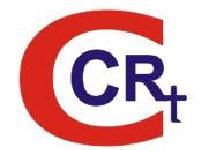
Search from over 6,50,000+ Tutors, Trainers and Training Institutes
What do you want to learn?
No Matching Category Found x
Please select a Categoryx
Where do you need it?
Please select a Locationx
Popular Courses in Panvel

English Speaking Course, English Grammar, English Fluency.
By Bharat koliSpoken EnglishKalamboli Node, Panvel
I have designed this course in 2 parts. 1. Basic English 2. Advance English 1. Basic English: In the basic English you will learn, simple and... Read More

Regulatory Affairs Certificate Course Training At Navi Mumbai
By vishalakshi NaikMedical Entrance Coaching,Health and Medical,Pharmacy TuitionPanvel City, Panvel
We are focused on Industry integrated training in Clinical Research. Centre for Clinical Research and Training... Read More

Medical Writing Course and Training in Mumbai
By vishalakshi NaikMedical Transcription,Pharmacy TuitionPanvel City, Panvel
Medical Writing Course and Training, Certificate Course, At Navi Mumbai Conducted by CCRT, Mumbai. Course Duration: 8 days / 2 months at part time weekends... Read More

Pharma Services in New Mumbai and Mumbai
By vishalakshi NaikHealth and Medical,Medical Transcription,Pharmacy TuitionPanvel City, Panvel
Quality Solutions -- Pharma, Food & cosmetics Consultancy services at Navi Mumbai Topics CoveredPharma, Food &Cosmetics Consultancy services • GMP &... Read More
How UrbanPro works

Post your requirement

Get customized responses

Compare & hire smartly
Find best Tutors, Trainers & Training Institutes for your requirement on India's Favourite Learning Destination.
Post your Requirement
Chandrabhan Vithal Zarekar replied | 05 Dec
Dr Pandit Sri Sidhant Arun is a best astrologer in Banglore.
Show previous answers 

Sonia replied | 01 Nov
balance your schedule by using a calendar and planner, communicate with your employer and support network, and create a dedicated study space free from distractions. Stay organized by breaking down tasks, setting clear goals, and leveraging online resources and tools.

Abhilash Panda replied | 24 Nov
Working and taking classes online is easy! Just follow these steps:
Boom! You’re now an online class pro. 😂
Thousands of experts Tutors, Trainers & other Professionals are available to answer your questions
Ask a ProHow it works for Tutors & Training Institutes
![]()
Create Free Profile
Upload Photos, Portfolio, Certificates, Add Description, Qualification, Achievements to Help students Discover You
![]()
Teach Students Online / Offline
Use world class tools for FREE to teach Students across India and globally. Get Training support and Marketing support to get steady stream of Students to teach.
![]()
Earn a steady income
Earn handsomely based on the number of Students you teach. Top Tutor Partners earn ₹ 40,000 to ₹ 1,50,000 per month.
Requirements by Customers
Post requirement and connect with the tutors in your locality

Find best tutors, trainers & institutes near you on UrbanPro
Post your learning requirement
Richa Arora replied | 15 hrs ago
60 to over 100 hours, depending on the individual's existing knowledge and the depth of the course. This is part of a total recommended study time of 170-200 hours, which also includes significant time for self-practice.